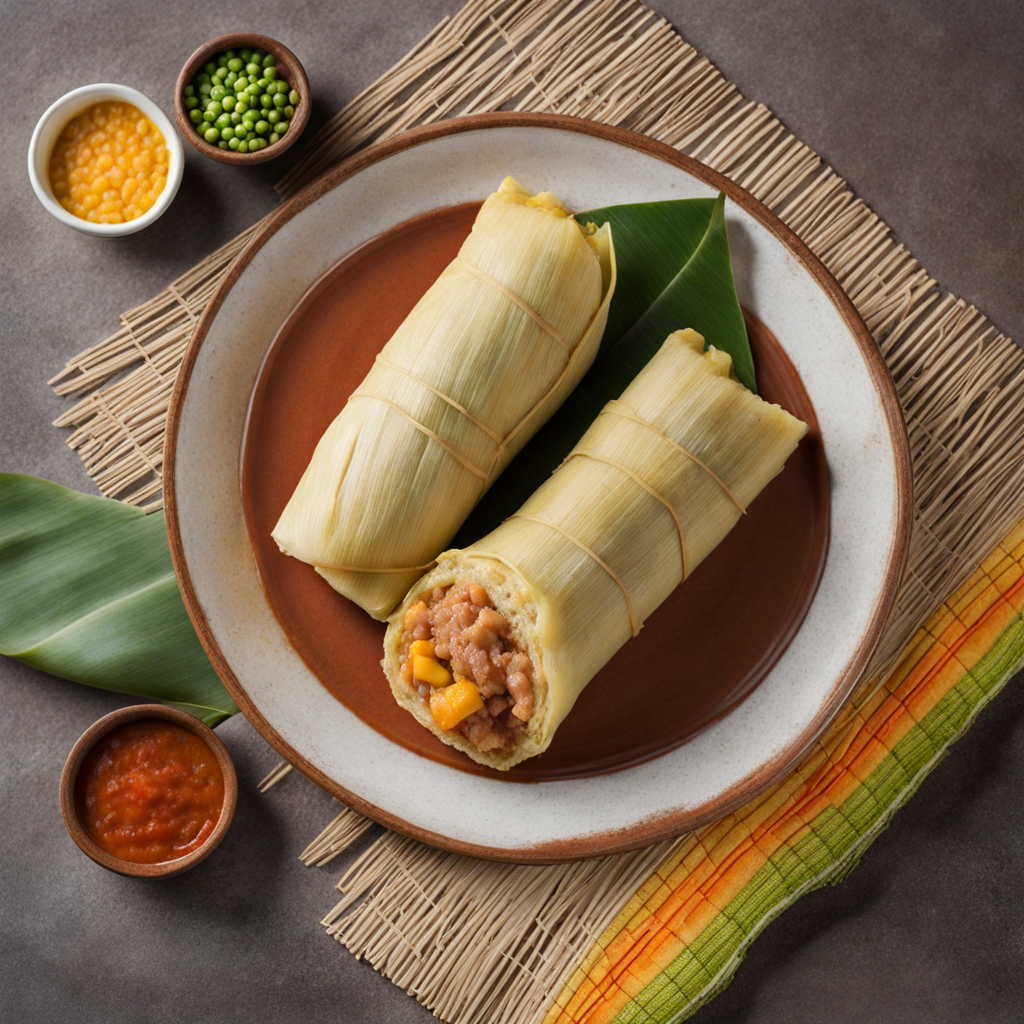Lechona
Lechona is a traditional Colombian dish that showcases the rich culinary heritage of the country. At its core, lechona consists of a whole roasted pig, meticulously prepared to achieve a delightful combination of flavors and textures. The pig is typically stuffed with a harmonious mixture of rice, peas, spices, and sometimes even vegetables, which infuse the meat with an aromatic essence. The slow-roasting process, often done in a specially designed oven or pit, results in tender, succulent meat that melts in your mouth, while the skin becomes irresistibly crispy, offering a satisfying crunch with each bite. What makes lechona truly unique is its regional variations and the way it brings communities together. In Colombia, it is often served during festive occasions, family gatherings, and special celebrations, reflecting the importance of sharing and enjoying food in the company of loved ones. The dish is typically accompanied by a variety of sides, such as arepas, avocado, and a tangy aji sauce, enhancing the overall dining experience. Each bite is a celebration of flavors, with the savory, seasoned meat perfectly complementing the freshness of the accompaniments. Lechona is not just a meal; it is a culinary tradition that tells a story of Colombian culture and hospitality. As you savor this dish, you will find an explosion of flavors that encapsulates the essence of Colombian cuisine. The balance of spices, the richness of the meat, and the comforting side dishes come together to create a memorable dining experience that invites you to explore more of Colombia's diverse food landscape.
How It Became This Dish
The Rich History of Lechona: Colombia's Culinary Treasure Lechona, a traditional Colombian dish, is much more than just a meal; it is a celebration of culture, history, and community. This savory delight, which features a whole roasted pig stuffed with rice, peas, vegetables, and spices, encapsulates the essence of Colombian gastronomy and has deep roots in the country’s agricultural and social practices. #### Origins of Lechona The origins of lechona can be traced back to the indigenous peoples of the region, who practiced cooking whole animals over open flames, a method that predates European colonization. The practice of roasting a whole pig is not unique to Colombia, as variations of this dish can be found across Latin America and beyond. However, lechona as it is known today has been adapted and embraced as a quintessential dish of Colombian culture, particularly in the Tolima and Huila regions. The name "lechona" derives from the Spanish word "lechón," which means "suckling pig." This term highlights the dish's primary ingredient, which is traditionally a young pig, known for its tender meat and crispy skin. The preparation of lechona has evolved over centuries, influenced by indigenous culinary practices, Spanish colonization, and Afro-Colombian traditions. #### Cultural Significance Lechona holds a significant place in Colombian culture, often served during festive occasions, family gatherings, and national celebrations. It is a staple at Christmas dinners and New Year celebrations, symbolizing abundance and togetherness. The communal aspect of preparing and sharing lechona reflects the strong family ties and social bonds that characterize Colombian society. The dish is often prepared for special occasions such as weddings, birthdays, and religious festivities. Its preparation can be a communal activity, with families and friends coming together to help with the cooking process, reinforcing social connections and shared traditions. The act of roasting a pig can take several hours, making it an all-day affair filled with laughter, storytelling, and the aroma of spices wafting through the air. #### The Development of Lechona Over Time As Colombia's regions developed their own culinary identities, so too did the variations of lechona. In the Tolima region, the dish is prepared with a specific recipe that includes rice, peas, and a mix of spices, all stuffed into the pig’s cavity before it is roasted. The rice absorbs the flavors of the pig, making it a savory and rich accompaniment. The pig is sometimes seasoned with a marinade of garlic, cumin, and other spices, enhancing the overall taste. In the Huila region, lechona may include additional ingredients, such as potatoes or even avocado leaves, which impart a distinct flavor. These regional variations showcase how local ingredients and cooking techniques have shaped the dish over time, leading to a diversity of flavors and styles. The cooking methods have also evolved. Traditionally, lechona was cooked in a pit or over an open flame, a method that is still cherished in rural areas. However, modern kitchens sometimes adapt this tradition using ovens or rotisseries, which provide more consistent results while still allowing for the classic crispy skin that is a hallmark of the dish. #### Lechona in Contemporary Colombia Today, lechona remains a beloved dish across Colombia, and its popularity has spread beyond the borders of its origin. It is commonly found at restaurants, street food stalls, and during festivals, where it is often accompanied by arepas, a traditional corn-based food, and aji, a spicy salsa made from tomatoes, peppers, and cilantro. The dish has also garnered attention internationally, with Colombian immigrant communities introducing lechona to other countries. It has become a symbol of Colombian pride, representing the rich culinary heritage of the nation. Festivals celebrating Colombian culture often feature lechona, allowing non-Colombians to experience this unique dish. Moreover, the dish has gained recognition for its role in promoting sustainable practices. Whole animal cooking aligns with a nose-to-tail philosophy, encouraging the use of all parts of the animal and reducing food waste. This approach resonates with contemporary culinary movements that prioritize sustainability and ethical eating. #### Economic Impact The preparation of lechona also has economic implications, especially in rural areas where pig farming plays a crucial role in the local economy. Many families rely on the production of lechona for their livelihoods, raising pigs specifically for this purpose. The demand for lechona has stimulated local agriculture, promoting the cultivation of rice, beans, and spices that are integral to the dish. In conclusion, lechona is a dish steeped in history and cultural significance, embodying the heart and soul of Colombian cuisine. From its indigenous roots to its contemporary adaptations, lechona represents a tapestry of flavors and traditions that has evolved over time. Whether served at a festive gathering or enjoyed in a rustic setting, lechona continues to bring people together, celebrating the richness of Colombian heritage and the joy of sharing a meal. As Colombia continues to assert its culinary identity on the global stage, lechona remains a shining example of the country's gastronomic treasure, inviting all to partake in its delicious legacy.
You may like
Discover local flavors from Colombia







